Caryn
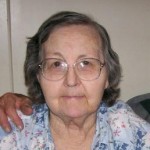
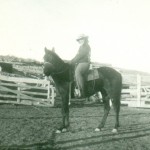 My mother-in-law, Joann Schulenberg has always been a tough lady, and I suppose that is why we found it so hard to believe that she would not win this final battle in her life. She bounced back so many times, when we all thought she was going for sure, but in the end, it was not the things we expected to take her life, like COPD or diabetes, that actually did so, but rather kidney failure, complicated by congestive heart failure. Through all of the many episodes of illness in her life, we were amazed at the strength she displayed while fighting her way back to where she had been before getting sick. This final battle would be different. She was tired, and she was ready to go home to Heaven. And while we were very sad and hated to let her go, we could not ask her to stay. She had suffered long enough.
My mother-in-law, Joann Schulenberg has always been a tough lady, and I suppose that is why we found it so hard to believe that she would not win this final battle in her life. She bounced back so many times, when we all thought she was going for sure, but in the end, it was not the things we expected to take her life, like COPD or diabetes, that actually did so, but rather kidney failure, complicated by congestive heart failure. Through all of the many episodes of illness in her life, we were amazed at the strength she displayed while fighting her way back to where she had been before getting sick. This final battle would be different. She was tired, and she was ready to go home to Heaven. And while we were very sad and hated to let her go, we could not ask her to stay. She had suffered long enough.
Throughout the years that Joann was my mother-in-law, she was an inspiration to many people. She had the ability to do so many things…knitting, crocheting, sewing, canning, and oh, her baking!! Mom could make a “Murder Cake” that could easily destroy any diet, because it was irresistible. “Murder Cake” was a chocolate cake with so much gooey, yummy fudge that the frosting became a part of the gooey cake. Maybe it was called “Murder Cake” because it murdered your diet. It was also my mother-in-law who introduced me to Squash and Pancakes, a dish that sounds like it should be awful, but one bite, and you are hooked. My husband, Bob; daughter, Amy; and I look forward to summer just for the squash and pancakes.
Having been raised in the country or small towns, the country was where Joann felt mostly at home. It was where she raised her children, and where one of them still lives today. She felt like it was easier to keep track of all those kids, if she had them out in the country, and when the family lived in Mills while the older children were in grade school, she finally told my father-in-law, Walt, that he needed to get the family back out in the country. And so he did. For the first 23 years of my marriage into the family, that is where they lived, and then because of health issues, they made a trade for a house in Casper…right on one of the busiest intersections in town…13th and McKinley Streets. While my mother-in-law said she hated the noise of the traffic and many emergency vehicles, she sure loved to look out the window to see what was going on out there. She secretly enjoyed the flurry of activity that was always going on out on the busy streets, and while Alzheimer’s Disease 
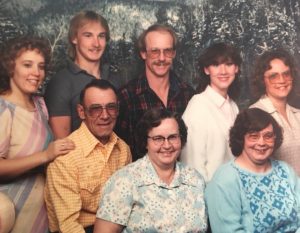 might have taken her most recent memories away, she always had her favorite pastime…people watching, whether they be in traffic, walking, or on television. My mother-in-law’s Alzheimer’s Disease was the kind that kept the funniest things in life in the forefront of her memory, and she could say the funniest things. While she might not remember our names, she always knew that her children and grandchildren belonged to her, and for that we are forever grateful. Rest in peace Mom, we miss you already, and we love you forever.
might have taken her most recent memories away, she always had her favorite pastime…people watching, whether they be in traffic, walking, or on television. My mother-in-law’s Alzheimer’s Disease was the kind that kept the funniest things in life in the forefront of her memory, and she could say the funniest things. While she might not remember our names, she always knew that her children and grandchildren belonged to her, and for that we are forever grateful. Rest in peace Mom, we miss you already, and we love you forever.
 Sometimes, people can associate certain things with certain religions, and even Satanism. They can then make decisions on life based on what they perceive something to be. Unfortunately, sometimes those decisions end up being disastrous. Such was the case with Pope George IX, who decided that cats where a part of devil worship, and so ruled that cats should be exterminated. Cats throughout Europe were exterminated in droves immediately thereafter. Of course, we know that while some religions might use certain animals in their religious practices, that does not make the animal evil…but rather, the animal is a victim of that religion, much like people in certain religions use snakes as a part of worship.
Sometimes, people can associate certain things with certain religions, and even Satanism. They can then make decisions on life based on what they perceive something to be. Unfortunately, sometimes those decisions end up being disastrous. Such was the case with Pope George IX, who decided that cats where a part of devil worship, and so ruled that cats should be exterminated. Cats throughout Europe were exterminated in droves immediately thereafter. Of course, we know that while some religions might use certain animals in their religious practices, that does not make the animal evil…but rather, the animal is a victim of that religion, much like people in certain religions use snakes as a part of worship.
After the cats were removed from Europe, an unexpected and horrific side effect occurred. The sudden lack of cats led to the spread of disease because infected rats ran free. The most devastating of these diseases, the Bubonic Plague, killed 100 million people. Pope Gregory lived from 1145 to 1241, AD, so little was known about how disease was passed. He was born Ugolino di Conti but took the name Gregory when he became the pope. That was when Ugolino was over 80 years old, not a young age to take on the papal role.
The cat fiasco is just one part of Pope Gregory IX’s story. He is mostly known for issuing the Decretals and starting the Papal Inquisition. The Decretals reorganized the whole library of Catholic laws. The papal inquisition rained down justice on heretics, the people who spoke out against the church. It was Gregory’s past  as a lawyer that connected him to his acts of justice within the church. It was his distaste for cats that penned the Vox in Rama (the papal decree – this one about the cats). That was the first church document condemning black cats as instruments of satan. By Gregory’s decree, there was a target on the head of every black cat. The Black Death or Black Plague was the original zombie apocalypse. People living during this time lived in constant fear of death. Many believed this was the end of the human race, and that is understandable. It was one of the most deadly pandemics in history. By rough estimates, as many as 200 million people died. If you survived, you lost many loved ones, and in Europe, it was all because of a lack of cats.
as a lawyer that connected him to his acts of justice within the church. It was his distaste for cats that penned the Vox in Rama (the papal decree – this one about the cats). That was the first church document condemning black cats as instruments of satan. By Gregory’s decree, there was a target on the head of every black cat. The Black Death or Black Plague was the original zombie apocalypse. People living during this time lived in constant fear of death. Many believed this was the end of the human race, and that is understandable. It was one of the most deadly pandemics in history. By rough estimates, as many as 200 million people died. If you survived, you lost many loved ones, and in Europe, it was all because of a lack of cats.
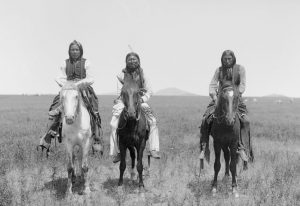 The battle for lands owned, desired, or presumed owned, is one that has raged in the United States for many, many years. When the pilgrims first came to the new world, it did not seem like a problem to the Native Americans, but as more and more “White Men” came, the Native Americans could see the writing on the wall. so to speak. They knew that their wide open spaces were in jeopardy, and they were determined not to lose the battle for their most prized possession…land. In the 18th and 19th centuries settlers from Europe moved westward across America in a steady wave. The migration overwhelmed ancient tribes like the Iroquois, the Cherokee, and the Shawnee. But when the settlers reached Texas and the lands of the Comanche, the migration stopped in it’s tracks. Many of the Indians back then were somewhat like the settlers. They had their villages, and they stayed in one place, or moved slowly from one place to another. The Comanche were just like that, until the horse arrived in North America. But the Comanche adapted to the horse like no other Native American group. They became nomads, following the buffalo, and as they exploded across the Texas plains, they virtually wiped out the Apache. Their enormous horse herds were legendary, as were their riding skills. While the Cheyenne and Sioux would dismount before battles, the Comanche mastered the art of fighting on horseback. They planted no crops, built no settlements, and shunned complex ritual or religion. The name “Comanche” was given to them by the Utes. It means “enemies.”
The battle for lands owned, desired, or presumed owned, is one that has raged in the United States for many, many years. When the pilgrims first came to the new world, it did not seem like a problem to the Native Americans, but as more and more “White Men” came, the Native Americans could see the writing on the wall. so to speak. They knew that their wide open spaces were in jeopardy, and they were determined not to lose the battle for their most prized possession…land. In the 18th and 19th centuries settlers from Europe moved westward across America in a steady wave. The migration overwhelmed ancient tribes like the Iroquois, the Cherokee, and the Shawnee. But when the settlers reached Texas and the lands of the Comanche, the migration stopped in it’s tracks. Many of the Indians back then were somewhat like the settlers. They had their villages, and they stayed in one place, or moved slowly from one place to another. The Comanche were just like that, until the horse arrived in North America. But the Comanche adapted to the horse like no other Native American group. They became nomads, following the buffalo, and as they exploded across the Texas plains, they virtually wiped out the Apache. Their enormous horse herds were legendary, as were their riding skills. While the Cheyenne and Sioux would dismount before battles, the Comanche mastered the art of fighting on horseback. They planted no crops, built no settlements, and shunned complex ritual or religion. The name “Comanche” was given to them by the Utes. It means “enemies.” 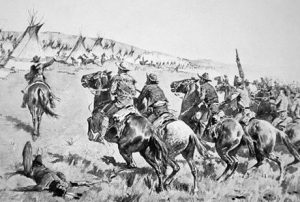
Unfortunately for the Comanche, they were no match for the settlers. After being beaten early on, the Comanche avoided direct conflict for the most part. They preferred to attack undefended farmhouses, slaughtering the inhabitants. It worked, the settlers were too afraid to travel into Comanche territory, and European expansion almost came to a screeching halt. In 1858, after a particularly bloody year, the Texas Rangers were ordered to take care of the Comanche. The empire of the Texas plains was a brutal and unchanging grassland of deadly heat and vast wildfires. No European had traveled very far into the territory, but now the Rangers intended to do just that. They were accompanied by a group of Tonkawas, a local tribe hated by other Native Americans for their cannibalism. The Comanche slaughtered the Tonkawas whenever possible, and the survivors were out for revenge. Together, the Rangers and the Tonkawas traveled for weeks, even fording stretches of pure quicksand, until they discovered a huge Comanche camp stretching along a creek in the Antelope Hills. The Comanche sprang onto their horses, but it was too late. They never expected to be attacked in the heart of the Comancheria and were in no position to fight. It looked as if all was lost, and indeed it was, but they did not know that yet.

Suddenly, Chief Iron Jacket rode out of the chaos. His true name was Pobishequasso, but he was known as Iron Jacket for his ancient coat of Spanish armor, a family heirloom looted from the corpse of some unlucky conquistador. He exhaled great breaths of air as he rode toward the Rangers, working his medicine, which was said to blow bullets off target. The Rangers and the Tonkawas opened fire, but Iron Jacket kept coming. The bullets seemed to bounce off him, and for a moment, it seemed that he was unstoppable. Then, the magic ended. A hail of rifle fire cut down his horse, and a second volley finished Pobishequasso. His followers…armed only with lances and ancient muskets..fled, pursued by the Rangers, who picked off at least 76 of them. In the years that followed, the settlers became bolder, launching numerous raids into the Comancheria. Iron Jacket’s rusting armor was broken up for souvenirs. The reign of the Comanche was over.

 After serving in the Navy for six years, my nephew, Allen Beach decided that it was time to move on to get the education that he wanted, which is hospital administration. He began his Navy career planning to become a pilot, but an injury forced him out of the program early on. He then decided to become a Corpsman, and found that he had a knack for that. His first duty station was in Bethesda, Maryland at Walter Reed Rational Military Medical Center, a term of service he was very proud of. While there, he was one of the EMTs who took care of the medical needs of the first family.
After serving in the Navy for six years, my nephew, Allen Beach decided that it was time to move on to get the education that he wanted, which is hospital administration. He began his Navy career planning to become a pilot, but an injury forced him out of the program early on. He then decided to become a Corpsman, and found that he had a knack for that. His first duty station was in Bethesda, Maryland at Walter Reed Rational Military Medical Center, a term of service he was very proud of. While there, he was one of the EMTs who took care of the medical needs of the first family.
After his term at Walter Reed Medical Center, Allen was stationed in Japan, which is where he met his future wife, Gabby, who was also a Corpsman stationed at the same base. Needless to say, Allen was very happy with his time in Japan, and meeting the love of his life. After that, Allen left the Navy, and for Gabby’s final year, they were stationed back at Walter Reed Medical Center. Now that both of them are out of the Navy, they have decided to move to Casper, Wyoming so that Gabby can continue her education too. Casper College has an excellent nursing program, and that is her chosen field. So, upon their release from the Navy, the headed west.
At this point, Allen and Gabby are living in an apartment on his mom and step-dad’s land outside of town. I’m sure that is quite a culture shock to them after the hustle and bustle of the Washington DC area. In addition,  they are getting used to the winters in Wyoming. Not that they never got snow in Japan or in Washington DC, but I don’t think they had the winds like we have here. One nice thing about the move was the ability to be closer to family. Allen and Gabby were able to spend Christmas week in Rawlins with the family there, and they all had a great time. They have really taken to country living, and other than the severe cold causing their pipes to freeze, life is good. Allen is still looking for a job, so once he gets a job they will be set, as his classes are online. We are very proud of all of his s accomplishments, and we know that the future will be bright for both of them. Today is Allen’s birthday. Happy birthday Allen!! Have a great day!! We love you!!
they are getting used to the winters in Wyoming. Not that they never got snow in Japan or in Washington DC, but I don’t think they had the winds like we have here. One nice thing about the move was the ability to be closer to family. Allen and Gabby were able to spend Christmas week in Rawlins with the family there, and they all had a great time. They have really taken to country living, and other than the severe cold causing their pipes to freeze, life is good. Allen is still looking for a job, so once he gets a job they will be set, as his classes are online. We are very proud of all of his s accomplishments, and we know that the future will be bright for both of them. Today is Allen’s birthday. Happy birthday Allen!! Have a great day!! We love you!!

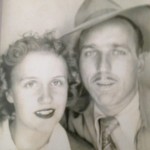 My mom, Collene Spencer was a sweet, loving, and forgiving person all her life. She carried that personality into her marriage and motherhood. I’ve really never met anyone who was as truly kind hearted as my mom was. All of her life she had a heart for people. She tried to tell people about the most important thing in her life…her Lord and Saviour, Jesus Christ. Mom wanted everyone she came across to be in Heaven when they died. Mom was in every way a missionary…just without the funding that many missionaries have. She didn’t travel the world to preach the Gospel, she traveled her world preaching the Gospel. It didn’t matter where she was, if she was with family, friends, or strangers, her mission was clear, and she was a willing servant of the Lord. My guess is that the people she led to the Lord by preaching to them numbers in the thousands. It is her legacy in many ways.
My mom, Collene Spencer was a sweet, loving, and forgiving person all her life. She carried that personality into her marriage and motherhood. I’ve really never met anyone who was as truly kind hearted as my mom was. All of her life she had a heart for people. She tried to tell people about the most important thing in her life…her Lord and Saviour, Jesus Christ. Mom wanted everyone she came across to be in Heaven when they died. Mom was in every way a missionary…just without the funding that many missionaries have. She didn’t travel the world to preach the Gospel, she traveled her world preaching the Gospel. It didn’t matter where she was, if she was with family, friends, or strangers, her mission was clear, and she was a willing servant of the Lord. My guess is that the people she led to the Lord by preaching to them numbers in the thousands. It is her legacy in many ways.
Mom loved all things of beauty. She grew up collecting rocks, and her rock garden was filled with her many finds. She saw beauty in many different things. Our home was decorated with Mom’s own special style, that 
 also included the “artwork” of her girls from time to time. I can’t say that our “artwork” really added to the beauty of her home, but in her eyes they were treasures. I know how much she treasured these things, because when we went through her things after her passing, there were her treasures, including the artwork of her girls. Her girls and her husband, my dad, Allen Spencer, were her world. She wanted nothing more than to take care of us and make a good home for us, and she did that very well, even though she was not able to be a stay-at-home mom for all of our growing up years.
also included the “artwork” of her girls from time to time. I can’t say that our “artwork” really added to the beauty of her home, but in her eyes they were treasures. I know how much she treasured these things, because when we went through her things after her passing, there were her treasures, including the artwork of her girls. Her girls and her husband, my dad, Allen Spencer, were her world. She wanted nothing more than to take care of us and make a good home for us, and she did that very well, even though she was not able to be a stay-at-home mom for all of our growing up years.
Mom always loved to travel. It was something Dad introduced her to, and together, they traveled the United States, visiting almost every state. The vacations we took and the places we got to see were amazing. They showed us every historical marker they could find, and while we might not have appreciated those markers then, we learned so much about our country. I think I can attribute many of my stories to things I learned from my parents. Camping was the order of the day when we traveled, and cooking over a campfire, until later when 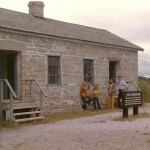
 we got a travel trailer. Mom was an excellent cook and she passed that ability down to her girls. There wasn’t one of her girls who couldn’t cook when we got married, and our husbands have been the beneficiaries of her teaching. She was an amazing teacher of many things, including helping out at our schools, even substitute teaching when I was in grade school. It was another way that she traveled her world, filling it with life, light, and beauty as she went. Today would have been my mom’s 82nd birthday. Happy birthday in Heaven, Mom. We love and miss you very much.
we got a travel trailer. Mom was an excellent cook and she passed that ability down to her girls. There wasn’t one of her girls who couldn’t cook when we got married, and our husbands have been the beneficiaries of her teaching. She was an amazing teacher of many things, including helping out at our schools, even substitute teaching when I was in grade school. It was another way that she traveled her world, filling it with life, light, and beauty as she went. Today would have been my mom’s 82nd birthday. Happy birthday in Heaven, Mom. We love and miss you very much.
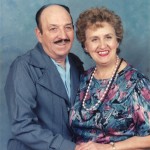
 Every New Year’s Eve for as long as I can remember, our family threw a party, both for the New Year and for my mom’s birthday, which is January 1. It is our New Year’s Eve Tradition. As I was thinking about our tradition, I wondered about other New Year’s Eve Traditions. So, I decided to research some of them. Wow!! There are some really strange traditions out there. One I found particularly strange was that in Switzerland, they drop a dollop of ice cream on the floor. It is supposed to bring overflowing abundance in the New Year. Now, I don’t know about you, but I think that is strange…and messy. In Spain, it is all about good timing. When the clock strikes midnight, Spaniards try to eat a grape in time with each chime. Those who don’t manage to cram the right number of grapes at the right time face the threat of bad luck for the following year. Be warned, it’s not as easy as it sounds, apparently. Many people practice beforehand to increase their chances of beating the clock. This is serious business from what I read. In Czechoslovakia, they like to look to their future around New Year’s, usually with the help of an apple. The fruit is cut in half and the shape of the core determines the person’s fate. If it’s a cross, mischief is on the way, but if it’s a star, you can expect happiness. Apparently, many New Year’s Eve traditions center around food…including our party, but our party doesn’t have any traditions that involve the food.
Every New Year’s Eve for as long as I can remember, our family threw a party, both for the New Year and for my mom’s birthday, which is January 1. It is our New Year’s Eve Tradition. As I was thinking about our tradition, I wondered about other New Year’s Eve Traditions. So, I decided to research some of them. Wow!! There are some really strange traditions out there. One I found particularly strange was that in Switzerland, they drop a dollop of ice cream on the floor. It is supposed to bring overflowing abundance in the New Year. Now, I don’t know about you, but I think that is strange…and messy. In Spain, it is all about good timing. When the clock strikes midnight, Spaniards try to eat a grape in time with each chime. Those who don’t manage to cram the right number of grapes at the right time face the threat of bad luck for the following year. Be warned, it’s not as easy as it sounds, apparently. Many people practice beforehand to increase their chances of beating the clock. This is serious business from what I read. In Czechoslovakia, they like to look to their future around New Year’s, usually with the help of an apple. The fruit is cut in half and the shape of the core determines the person’s fate. If it’s a cross, mischief is on the way, but if it’s a star, you can expect happiness. Apparently, many New Year’s Eve traditions center around food…including our party, but our party doesn’t have any traditions that involve the food.
Several of the traditions sounded very familiar to me, because they are traditions I have grown up with. Many places celebrate with fireworks on New Year’s Eve. In some places, it is believed that the noise and light from fireworks and sparklers would scare away bad spirits, not something I believe in, but some people might. At our house, midnight means that it’s time to “beat the pans.” It’s something we have done since I was a little girl, and a tradition that my sisters and I would not change. It reminds us of our parents, and makes it seem like they are there with us on that special night each year. I do think that my parents might be surprised to find out that their tradition, that they made up, is one that is also tradition in Iran…I was very surprised.
A couple of traditions were, strange to me. People in Buenos Aires, Argentina, have an unusual tradition. On the last day of the year they shred old documents and papers to symbolize leaving the past behind. Around noon, on New Year’s Day, people throw the scraps of paper from their windows all over the city in a shower of confetti. Out with the old and in with the new, I guess. I hope they never need those documents. As strange as that tradition was, the winner of the strangest tradition on Earth…in my mind at least it the one celebrated in Peru. The last day of December…New Year’s Eve, is the day of the Takanakuy Festival. The Takanakuy Festival is the craziest festival I have ever heard of. The Takanakuy Festival, is the fighting festival. Every year people 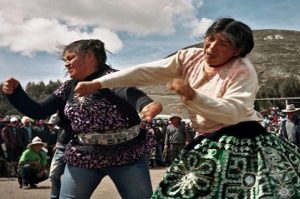
 of Peru have a fist fight to settle their differences. Can you imagine a whole town fighting in the street? They then start the year off on a clean slate on New Year’s Day. I guess then that it must be illegal (or at least, in very bad taste) to be mad about anything or at anyone that you had a fist fight with the day before. Now, I think that the tradition of not carrying any arguments into the new year is a really good one, but I know that I would not want to have to go through that whole fist fight part of the festival. Nope…I sure wouldn’t.
of Peru have a fist fight to settle their differences. Can you imagine a whole town fighting in the street? They then start the year off on a clean slate on New Year’s Day. I guess then that it must be illegal (or at least, in very bad taste) to be mad about anything or at anyone that you had a fist fight with the day before. Now, I think that the tradition of not carrying any arguments into the new year is a really good one, but I know that I would not want to have to go through that whole fist fight part of the festival. Nope…I sure wouldn’t.
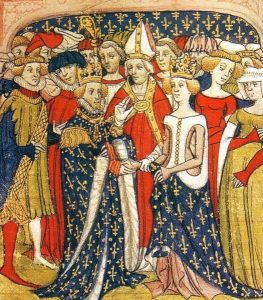 Most people think that English came from England, and of course, it did, however, in England prior to the 19th century, the English language was not spoken by the aristocracy, but rather only by “commoners.” Back then, English used to belong to the people, and I suppose that might explain some of the “incorrect” uses of the language which have been so severely attacked by contemporary English speakers. Prior to the 19th century, the aristocracy in English courts spoke French. This was due to the Norman Invasion of 1066 and caused years of division between the “gentlemen” who had adopted the Anglo-Norman French and those who only spoke English. Even the famed King Richard the Lionheart was actually primarily referred to in French, as Richard “Coeur de Lion.”
Most people think that English came from England, and of course, it did, however, in England prior to the 19th century, the English language was not spoken by the aristocracy, but rather only by “commoners.” Back then, English used to belong to the people, and I suppose that might explain some of the “incorrect” uses of the language which have been so severely attacked by contemporary English speakers. Prior to the 19th century, the aristocracy in English courts spoke French. This was due to the Norman Invasion of 1066 and caused years of division between the “gentlemen” who had adopted the Anglo-Norman French and those who only spoke English. Even the famed King Richard the Lionheart was actually primarily referred to in French, as Richard “Coeur de Lion.”
In my opinion, this dual language society would have caused numerous problems. The indication I get is that neither side could speak the language of the other, but I don’t know how a monarchy could rule, if the “commoners” could not understand the language and therefore the orders of the monarchy. French was spoken and learned by anyone in the upper 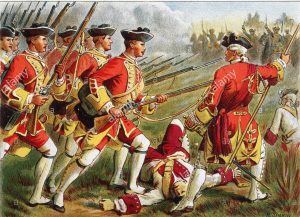 classes. However, it became less useful as English lost its control of various places in France, where the peasants spoke French, too. After that…about, 1450…English was simply more useful for talking to anybody. It is still true that British royals and many nobles are fluent in French, but they only use it to talk to French people, just like everybody else.
classes. However, it became less useful as English lost its control of various places in France, where the peasants spoke French, too. After that…about, 1450…English was simply more useful for talking to anybody. It is still true that British royals and many nobles are fluent in French, but they only use it to talk to French people, just like everybody else.
To further confuse your preconceptions about the English language, the “British accent” was, in reality, created after the Revolutionary War, meaning contemporary Americans sound more like the colonists and British soldiers of the 18th century than contemporary Brits. Many people have made a point of how much they love the British accent, but I think very few people know the real story behind the British accent. In the 18th century and before, the British “accent” was the way we speak herein America. Of course, accents vary greatly  by region, as we have seen with the accents of the south and east in the United States, but the “BBC English” or public school English accent…which sounds like the James Bond movies…didn’t come about until the 19th century and was originally adopted by people who wanted to sound fancier. I suppose it was like the aristocracy and the commoners, in that one group didn’t want to be mistaken for the other. After being handily defeated by the American colonists, I’m sure that the British were looking for a way to seem superior, even in defeat. The change in the accent of the English language was sufficient to make that distinction. Maybe it was their way of saying that they were better than the American guerilla-type soldiers who beat them in combat…basically they might have lost, but they were superior…even if it was only in how they sounded.
by region, as we have seen with the accents of the south and east in the United States, but the “BBC English” or public school English accent…which sounds like the James Bond movies…didn’t come about until the 19th century and was originally adopted by people who wanted to sound fancier. I suppose it was like the aristocracy and the commoners, in that one group didn’t want to be mistaken for the other. After being handily defeated by the American colonists, I’m sure that the British were looking for a way to seem superior, even in defeat. The change in the accent of the English language was sufficient to make that distinction. Maybe it was their way of saying that they were better than the American guerilla-type soldiers who beat them in combat…basically they might have lost, but they were superior…even if it was only in how they sounded.
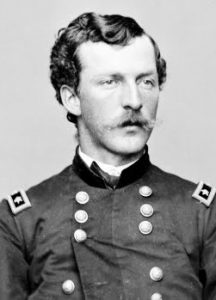
 Who shot first? We will never know, but on December 29, 1890, that first shot started a massacre. What lead up to that fateful day? For all of his 27 years, Black Elk’s had watched as the way of life of the Lakota Sioux on the Great Plains was taken away. Black Elk was a medicine man, who witnessed years of broken treaties. He watched as the white men “came in like a river” when gold was discovered in the Dakota Territory’s Black Hills in 1874. He was there two years later when Custer and his men were annihilated at Little Big Horn. He saw the Lakota’s traditional hunting grounds evaporate as white men decimated the native buffalo population. The Lakota, who once roamed as free as the bison on the Great Plains, were now mostly confined to government reservations.
Who shot first? We will never know, but on December 29, 1890, that first shot started a massacre. What lead up to that fateful day? For all of his 27 years, Black Elk’s had watched as the way of life of the Lakota Sioux on the Great Plains was taken away. Black Elk was a medicine man, who witnessed years of broken treaties. He watched as the white men “came in like a river” when gold was discovered in the Dakota Territory’s Black Hills in 1874. He was there two years later when Custer and his men were annihilated at Little Big Horn. He saw the Lakota’s traditional hunting grounds evaporate as white men decimated the native buffalo population. The Lakota, who once roamed as free as the bison on the Great Plains, were now mostly confined to government reservations.
Life for the Sioux was very bleak during the winter of 1890. Then came a glimmer of hope with the new Ghost Dance spiritual movement, which preached that Native Americans had been confined to reservations because they had angered the gods by abandoning their traditional customs. Leaders promised that the buffalo would return, relatives would be resurrected and the white man would be cast away if the Native Americans performed a ritual “ghost dance.” Such a ritual was seriously scary for the “white man.” The settlers grew increasingly alarmed and worried that an uprising was coming. “Indians are dancing in the snow and are wild and crazy,” telegrammed a frightened government agent stationed on South Dakota’s Pine Ridge Reservation to the commissioner of Indian affairs on November 15, 1890. “We need protection and we need it now.”
General Nelson Miles arrived with 5,000 troops as part of the Seventh Cavalry, which was Custer’s old command. He ordered the arrest of several Sioux leaders. When Indian police tried to arrest Chief Sitting Bull, who was mistakenly believed to have been joining the Ghost Dancers, the noted Sioux leader was killed in the melee. Then, on December 28, the cavalry caught up with Chief Big Foot, who was leading a band of upwards of 350 people to join Chief Red Cloud, near the banks of Wounded Knee Creek. The American forces arrested Big Foot, who was too ill with pneumonia to sit up, let alone walk, and positioned their Hotchkiss guns on a rise overlooking the Lakota camp. As a bugle blared the following morning, December 29, American soldiers mounted their horses and surrounded the Native American camp. A medicine man who started to perform the ghost dance cried out, “Do not fear but let your hearts be strong. Many soldiers are about us and have many bullets, but I am assured their bullets cannot penetrate us.” He implored the heavens to scatter the soldiers like the dust he threw into the air.
The cavalry went teepee to teepee seizing axes, rifles and other weapons. As the soldiers attempted to confiscate a weapon they spotted under the blanket of a deaf man, who could not hear their orders, a gunshot suddenly rang out. It was not clear which side shot first, but within seconds the American soldiers launched a hail of bullets from rifles, revolvers and rapid-fire Hotchkiss guns into the teepees. Outnumbered and 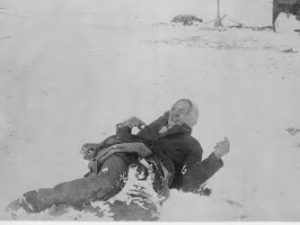
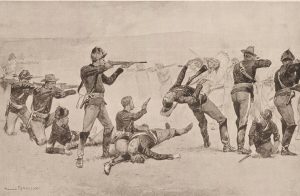 outgunned, the Lakota offered meek resistance. Big Foot was shot where he lay on the ground. Boys who had been happily playing leapfrog were mowed down. In just a matter of minutes, at least 150 Lakota Sioux Indians were killed along with 25 American soldiers. Half the victims were women and children. The soldiers might have thought they were being attacked…it’s hard to say. Nevertheless, that first shot brought about a massacre.
outgunned, the Lakota offered meek resistance. Big Foot was shot where he lay on the ground. Boys who had been happily playing leapfrog were mowed down. In just a matter of minutes, at least 150 Lakota Sioux Indians were killed along with 25 American soldiers. Half the victims were women and children. The soldiers might have thought they were being attacked…it’s hard to say. Nevertheless, that first shot brought about a massacre.

 Travel by ship was not always a safe mode of travel. Things like icebergs, wars, storms, and seashores were known to bring to an end a voyage, that was otherwise very enjoyable. Most people remember the Unsinkable Molly Brown, who was really Margaret Tobin, mostly because of all the publicity and even a musical. Surviving the sinking of the Titanic, while an amazing feat, was something that 705 other people did too. The stories and musical were a way of remembering the tragedy. As amazing as surviving a ship sinking in those days was, there is something that is far more amazing!!
Travel by ship was not always a safe mode of travel. Things like icebergs, wars, storms, and seashores were known to bring to an end a voyage, that was otherwise very enjoyable. Most people remember the Unsinkable Molly Brown, who was really Margaret Tobin, mostly because of all the publicity and even a musical. Surviving the sinking of the Titanic, while an amazing feat, was something that 705 other people did too. The stories and musical were a way of remembering the tragedy. As amazing as surviving a ship sinking in those days was, there is something that is far more amazing!!
Surviving, not one, but three ship accidents in those days. In 1910, Violet Jessop began working as an ocean liner stewardess and nurse for the White Star line. She was on board when RMS Olympic sailed on September 20, 1911. The Olympic was a luxury ship that was the largest civilian liner at that time. Olympic left from Southampton and collided with the British warship HMS Hawke. There were no fatalities when Olympic sand, and despite damage, the ship was able to make it back to port without sinking. She doesn’t really count this one, because it didn’t sink, but then it did collide with another ship. She didn’t think that one was such an amazing feat, but I’d say that counts. Jessop was then a stewardess on the RMS Titanic April 10, 1912, when she was 24 years old. Four days later, on April 14, it struck an iceberg in the North Atlantic, a story with we all know very well. Titanic sank a little more than two hours after the collision. Jessop described in her memoirs how she was ordered up on deck, because she was to function as an example of how to behave for the non-English speakers who could not follow the instructions given to them. She watched as the crew loaded the lifeboats. She was later ordered into lifeboat 16; and as the boat was being lowered, one of the Titanic’s officers gave her a baby to look after. The next morning, Jessop and the rest of the survivors were rescued by the RMS Carpathia. According to Jessop, while on board the Carpathia, a woman, presumably the baby’s mother, grabbed the baby she was holding and ran off with it without saying a word. Records indicate that the only baby on boat 16 was Assad Thomas, who was handed to Edwina Troutt, and later reunited with his mother on the Carpathia. Then, during the First World War, she served as a stewardess for the British Red Cross. On the morning of November 21, 1916, she was on board the HMHS Britannic, that had been converted into a hospital ship, when it sank in the Aegean Sea due to an unexplained explosion. The Britannic sank within 57 minutes, killing 30 people. British authorities decided that the ship was either struck by a torpedo or hit a mine planted by German forces.
After the war, Jessop continued to work for the White Star Line, before joining the Red Star Line and then the 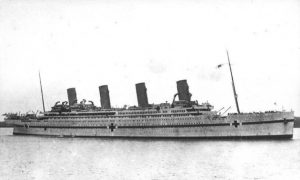
 Royal Mail Line again. During her tenure with Red Star, Jessop went on two around the world cruises on that company’s largest ship, the Belgenland. In her late thirties, Jessop had a brief marriage, and in 1950 she retired to Great Ashfield, Suffolk, where my dad had been stationed during World War II. Jessop, often winkingly called “Miss Unsinkable,” died of congestive heart failure in 1971 at the age of 83.
Royal Mail Line again. During her tenure with Red Star, Jessop went on two around the world cruises on that company’s largest ship, the Belgenland. In her late thirties, Jessop had a brief marriage, and in 1950 she retired to Great Ashfield, Suffolk, where my dad had been stationed during World War II. Jessop, often winkingly called “Miss Unsinkable,” died of congestive heart failure in 1971 at the age of 83.

 Some talents can be learned, but some tend to be things that you are just born with. I was watching a program the other day, and this couple was looking at a place to buy, and the husband mentioned that they could have a garden, and his wife said…”You can have a garden!!” He said, “Oh, because of your brown thumb.” I immediately thought of myself. A gardener I am not…and that is a fact. My husband’s aunt, Esther Hein, however, really likes to plant flowers and nurture them along. It is something that she has a talent for. I wish I did, but I was not born with that talent.
Some talents can be learned, but some tend to be things that you are just born with. I was watching a program the other day, and this couple was looking at a place to buy, and the husband mentioned that they could have a garden, and his wife said…”You can have a garden!!” He said, “Oh, because of your brown thumb.” I immediately thought of myself. A gardener I am not…and that is a fact. My husband’s aunt, Esther Hein, however, really likes to plant flowers and nurture them along. It is something that she has a talent for. I wish I did, but I was not born with that talent.
Aunt Esther also is a gifted artist and quilter. I have one of her paintings, and I really love it. Her quilting is well known, as is some of her sewing. She has made curtains and other such things for my father-in-law’s house, and I always liked knowing that those things came from Esther, with love. She made on particularly beautiful quilt for my father-in-law, that he loved so very much. It was always on their bed, and he was always extra careful to make sure that it was never harmed. Quilting is a beautiful art form, for those who are skilled enough to master it. Esther is, and again, I am not.
She also makes out a family calendar every year, with birthdays, death dates, and anniversary dates on it. It is 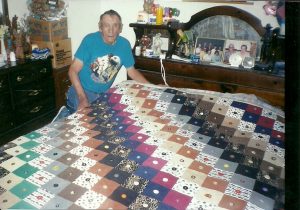 an act of love that she has done for many years for her family members. I remember looking at the calendar she sent to my father-in-law every year. The calendar had birthday and death date of people long passed, and was a great ancestry tool, as well as a way to keep up with important dates, and remember those long passed. Esther is active in her church, and loves the Lord, and she loves to play with her dogs, go camping, and snow shoeing, as well as traveling. We don’t get to see Esther as much as we would like, and we hope that maybe one of these days, her travels with bring her to Wyoming again. Of course, I suppose we should make our travels include Oregon too. Today is Esther’s birthday. Happy birthday Esther!! Have a great day!! We love you!!
an act of love that she has done for many years for her family members. I remember looking at the calendar she sent to my father-in-law every year. The calendar had birthday and death date of people long passed, and was a great ancestry tool, as well as a way to keep up with important dates, and remember those long passed. Esther is active in her church, and loves the Lord, and she loves to play with her dogs, go camping, and snow shoeing, as well as traveling. We don’t get to see Esther as much as we would like, and we hope that maybe one of these days, her travels with bring her to Wyoming again. Of course, I suppose we should make our travels include Oregon too. Today is Esther’s birthday. Happy birthday Esther!! Have a great day!! We love you!!

